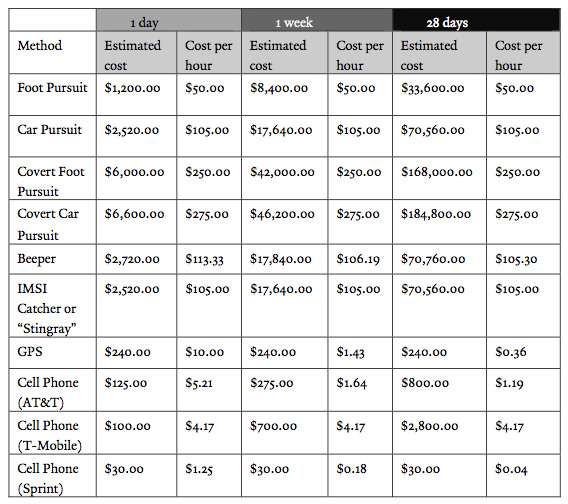The Surveillance State, Now at Bargain-Basement Prices


If you're concerned about fiscal responsibility and personal privacy, there's mixed news for you. The super-creepy surveillance techniques in which government officials increasingly indulge themselves come with a declining price tag. That's the good-ish news. The bad news is that, no friggin' surprise, government is likely to buy ever-more on-the-cheap eavesdropping precisely because of those bargain-basement prices—unless new legal barriers intervene. Legal scholars examining the phenomenon say that decining costs should be held against use of new surveillance techniques by the courts. Well…we can hope.
In a Yale Law Journal article parsing the United States v. Jones ruling that attaching a GPS device to a vehicle constitutes a search under the Fourth Amendment, Kevin S. Bankston and Ashkan Soltani open with a relevant quote by Judge Richard Posner from a 2007 case: "Technological progress poses a threat to privacy by enabling an extent of surveillance that in earlier times would have been prohibitively expensive."
Posner issued his warning about the growing ease of technological surveillance even while upholding a conviction in a case involving electronic tracking. He cautioned that the use of a tracking device in the case at hand might be justified, but that mass surveillance was an increasing concern that needed to be addressed by the courts.
United States v. Jones did that, but not in an especially satisfactory way. Bankston and Soltani write:
The Jones concurrences, taken together, are potentially a watershed moment in the Court's Fourth Amendment jurisprudence. Prior to Jones, the Court's precedent on location tracking—regarding radio "beeper"-based vehicle tracking in the 1980s—indicated that one could have no reasonable expectation of privacy in one's public movements. In Jones, five Justices rejected that proposition, at least with respect to prolonged government surveillance of one's public movements. Unfortunately, those Justices stopped short of clarifying when one does have such an expectation or when surveillance violates it—other than Justice Alito's conclusion that "the line was surely crossed before the 4-week mark."
George Washington University Professor of Law Orin Kerr offered what he calls the "equilibrium-adjustment" theory of the Fourth Amendment (PDF)—basically, that constitutional privacy protections should be taken as a constant, with specific restrictions on searches and seizures shifted to maintain them relative to government officials' ability to intrude into our lives.
But how you measure the state's ability to intrude? Yes, we know that surveillance is getting easier, but adjusting protections requires quantifying that ease in some way.
So Bankston and Soltani suggest measuring the cost of tracking people and using that as a guideline. And the costs they come up with are interesting. For instance, they estimate the cost of a foot pursuit of a single suspect at $50 per hour, per agent. Tailing a car with another car comes in at $105 per hour, using the Internal Revenue Service's standard deduction and making assumptions about speed and time spent in a vehicle. More cops in cars equals more cost.
"Stingray" cell phone trackers, surprisingly, aren't that cheap: Bankston and Soltani estimate their use at $105 per hour, because of the personnel-intensive way they're deployed.
But as the tech gets more advanced, and more remote from the target, the cost goes down, down, down… Tracking a vehicle with a GPS device can cost as little as pennies per hour—especially once you've amortized the personnel costs of installation over a few days.
Getting cell phone location data from a carrier can be even cheaper. Why wouldn't it be, since the work is farmed out to a private company that then shoulders most of whatever costs may be involved?

These plummeting costs, the authors suggest, are an effective way of monitoring the declining barriers to surveillance by the government. Those declining barriers should require greater restrictions on the state in order to maintain privacy protections.
Relying on the surveillance costs involved in these precedents, we arrive at a rough rule of thumb: If the cost of the surveillance using the new technique is an order of magnitude (ten times) less than the cost of the surveillance without using the new technique, then the new technique violates a reasonable expectation of privacy. …
Speaking more generally, any technology used for mass location surveillance would trigger our rule, because as the number of targets increases, the cost of tracking each one approaches zero.
That's an interesting approach, and one that's at least worthy of debate, whether or not the courts take it up.
But it's also worth seeing, in dollars and cents, just how dramatically the cost of keeping tabs on us is dropping for government agencies—and the temptations that must pose for officials who see their budgets effectively expanding in leaps and bounds when it comes to exercising their snoopy instincts.
